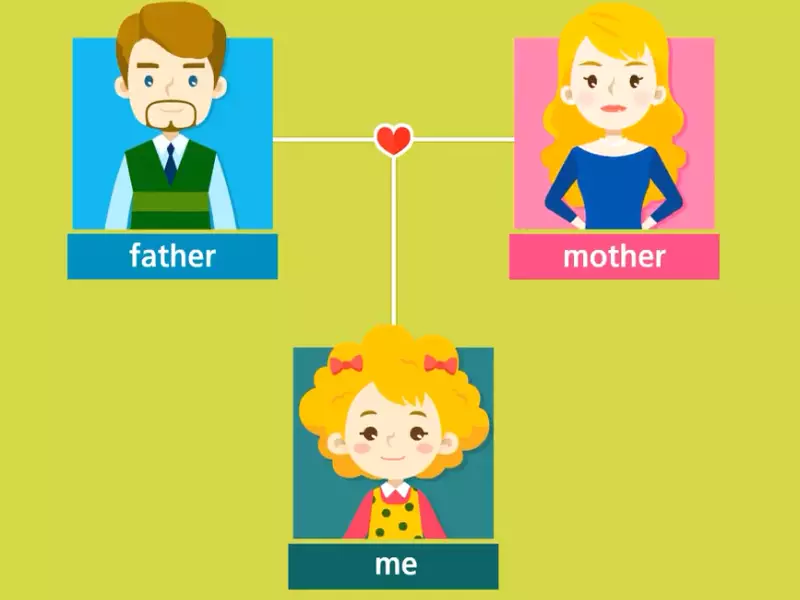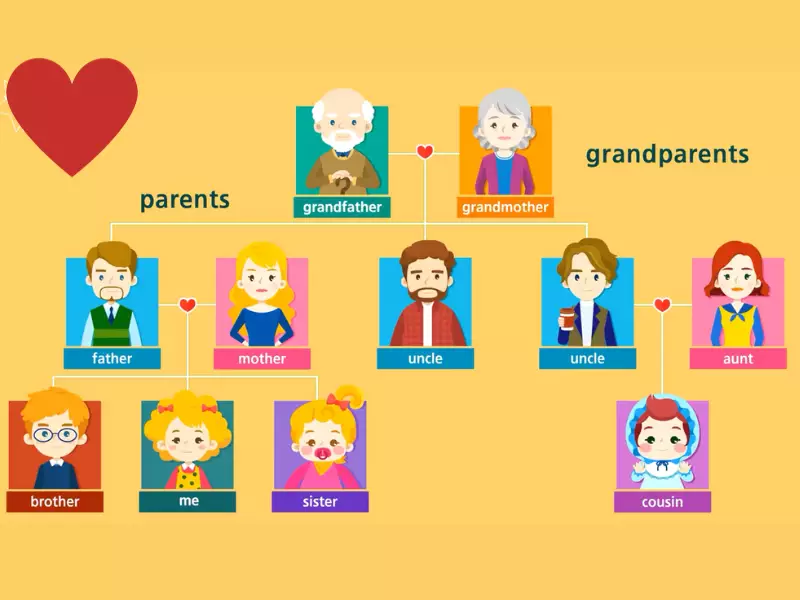The distinction between family and relatives is a nuanced aspect of human relationships that often goes unexplored. While these terms are frequently used interchangeably in casual conversation, they carry distinct meanings and implications for our social and emotional lives. The complexity of these connections forms the backbone of social structures, influencing everything from personal identity to legal matters.
At its core, the difference between family and relatives lies in the nature of the relationship and the bonds that tie individuals together. Family typically refers to a group of individuals connected by direct lineage or marriage, characterized by close emotional ties and a deep sense of belonging. Relatives, on the other hand, extend beyond the immediate family to include those connected by blood or marriage but not necessarily part of the daily familial interactions.
Understanding these distinctions is not merely academic; it has practical implications for navigating social obligations, legal rights, and personal relationships. Recognizing the varied dimensions of these connections helps us appreciate the diversity of human social structures and the roles we play within them.

Family Defined
Definition of Family
The concept of family is as ancient as humanity itself, yet its definition has evolved over time. Traditionally, a family is seen as a group of individuals who are connected by blood, marriage, or adoption. These connections are not merely formalities; they are the foundations upon which emotional, financial, and social support systems are built. In essence, a family serves as the primary unit of society, offering a sense of belonging, love, and security to its members.
Core Characteristics
Several core characteristics define a family, setting it apart from other social groups:
- Emotional bonds: The emotional connections within a family are profound and complex, characterized by love, commitment, and loyalty.
- Support systems: Families provide essential support to members, including physical care, emotional comfort, and financial assistance.
- Shared living arrangements: While not always the case, many families share a household, creating a common living space that fosters closeness and cooperation.
Types of Family Structures
Family structures can vary widely, reflecting the diversity of human societies. Some of the most common types include:
- Nuclear families, consisting of parents and their children.
- Extended families, which include relatives like grandparents, aunts, uncles, and cousins living closely or under the same roof.
- Single-parent families, where one parent raises one or more children.
- Childless families, couples who decide not to have children.
- Blended families, resulting from remarriages, including step-parents and step-siblings.
Relatives Explained
Definition of Relatives
Relatives extend the concept of family beyond the immediate connections of parents, siblings, and offspring. They encompass a broader network of individuals linked by blood relations, marriage, or adoption but who do not necessarily share the daily life or emotional closeness associated with a nuclear or extended family. This category includes people like grandparents, cousins, nieces, nephews, and in-laws.
How Relatives Extend Beyond the Immediate Family
Relatives play a crucial role in the broader family ecosystem, providing a sense of historical identity and belonging to a larger kinship network. They can offer support and companionship during family events, holidays, and significant life moments. Despite the geographical or emotional distance that may exist, the bond shared with relatives adds layers to an individual’s social and familial identity.
Key Differences
Emotional Bonds
The emotional bonds that define family and relatives are markedly different. Family members often share deep, inherent connections characterized by unconditional love and a profound sense of duty toward each other. In contrast, the emotional ties with relatives might be more formal or occasional, depending on the frequency of interactions and the personal relationship developed over time.
Legal Ties
Legal ties also distinguish family from relatives. Immediate family members have specific legal rights and responsibilities toward each other, such as inheritance rights, decision-making in healthcare, and guardianship. These legal connections can extend to certain relatives but typically with less direct impact than those within the immediate family.
Societal Roles
The societal roles of family and relatives further highlight their differences. Families are often seen as the primary nurturing environment for individual development, socialization, and education. Relatives contribute to this environment by offering additional layers of support, tradition, and cultural heritage, enriching the family’s social fabric.
Family Dynamics
The Role of Culture and Tradition
Culture and tradition play pivotal roles in shaping family dynamics. These elements dictate the structure of families, the roles of each member, the importance of extended relatives, and the practices that bind them. For instance, in some cultures, extended families living together is the norm, significantly influencing the upbringing and socialization of the younger generation.
Impact on Individual Identity
Family and relatives significantly impact an individual’s identity, providing a sense of belonging and a framework for understanding the world. The values, beliefs, and traditions passed down through generations help shape one’s perceptions, behaviors, and sense of self. This foundational influence is crucial in the development of personal and social identity.
Variations Across Societies
The configurations and significance of family and relatives vary across societies, reflecting diverse cultural, economic, and historical contexts. For example, in some societies, the extended family plays a central role in daily life and decision-making, while in others, the nuclear family is more prominent. These variations affect not only the structure of families and the role of relatives but also the social expectations and obligations of individual members.

Legal Perspectives
Inheritance and Rights
In the realm of legalities, the distinction between family and relatives becomes significantly pronounced, particularly in matters of inheritance and rights. Laws governing inheritance typically prioritize immediate family members, such as spouses, children, and parents, over more distant relatives. These laws ensure that assets and liabilities are transferred in a manner that reflects the deceased’s likely intentions and the societal emphasis on the nuclear family unit.
However, the intricacies of inheritance laws vary widely across jurisdictions, affecting how estates are distributed among family and relatives. For instance:
- Intestate succession laws dictate asset distribution when someone dies without a will, usually favoring the immediate family.
- Wills and trusts allow individuals to specify how their assets should be divided, potentially including relatives outside the immediate family circle.
The rights afforded to family members, such as the right to make medical decisions for incapacitated relatives, further underscore the legal recognition of these close bonds.
Family Law Considerations
Family law further illuminates the legal nuances between family and relatives through considerations like custody, alimony, and adoption. These areas highlight the legal system’s role in defining family responsibilities and rights, often focusing on the best interests of children and the equitable distribution of resources among family members.
Social Constructs
Evolving Definitions
The definition of family has been evolving, influenced by changing societal norms, cultural shifts, and legal reforms. Modern families can include same-sex parents, cohabiting couples, and blended families, reflecting a broader acceptance of diverse family structures. This evolution challenges traditional notions of family and underscores the fluidity of social constructs around familial relationships.
Influence of Social Norms
Social norms play a pivotal role in shaping our understanding of family and relatives. These norms influence expectations around roles within the family, the importance of marriage, and the value placed on biological versus chosen relationships. As societies evolve, so too do the norms that define what constitutes a family, leading to greater inclusivity and recognition of diverse family structures.
Emotional Bonds
Depth and Types of Emotional Connections
Emotional bonds form the core of family relationships, characterized by love, trust, and mutual support. These bonds vary in depth and nature, from the unconditional love often found between parents and children to the more complex, sometimes ambivalent relationships with extended relatives.
The types of emotional connections within families can be broadly categorized as:
- Attachment bonds, foundational in parent-child relationships, providing a sense of security and belonging.
- Companionship bonds, prevalent among siblings and close relatives, offering friendship and mutual support.
- Obligatory bonds, which may exist with distant relatives, often driven by societal expectations rather than personal affection.
How These Bonds Influence Relationships
The depth and type of emotional connections significantly influence the dynamics of family relationships. Strong bonds can provide a resilient support network, fostering individuals’ well-being and development. Conversely, strained or superficial connections might lead to feelings of isolation or conflict within the family unit.
Challenges and Conflicts
Navigating Family and Relative Disputes
Disputes among family and relatives are not uncommon, arising from issues like misunderstandings, jealousy, or disagreements over inheritance. Navigating these disputes requires a careful balance of empathy, communication, and, at times, legal intervention. Strategies to manage family conflicts include:
- Open communication, fostering a culture of honesty and transparency to address issues before they escalate.
- Mediation, involving a neutral third party to help resolve disputes and find mutually acceptable solutions.
- Setting boundaries, to ensure respect and privacy are maintained, reducing potential triggers for conflict.
The Role of Mediation and Counseling
Mediation and counseling play crucial roles in resolving family and relative disputes, offering structured environments to address and work through conflicts. These approaches prioritize the emotional well-being of all parties, aiming to restore harmony and understanding within the family unit.
- Mediation provides a neutral space for family members to discuss their grievances, guided by a mediator who helps facilitate a resolution.
- Counseling delves deeper into the emotional aspects of family conflicts, offering individuals and families the tools to improve communication, understand different perspectives, and heal emotional wounds.
Frequently Asked Questions
What defines someone as a family member?
A family member is defined by a combination of legal, biological, and emotional bonds. This includes individuals directly related by blood, such as parents and siblings, or through legal ties like marriage and adoption. The defining characteristic of a family member is the presence of a deep, personal connection and a sense of mutual responsibility and care.
How are relatives different from family?
Relatives include a broader spectrum of individuals who are connected by blood or marriage but may not share the same household or the close emotional ties typically found within a family. This category encompasses cousins, aunts, uncles, and in-laws, highlighting the extended network beyond the immediate family unit.
Can friends be considered family?
In many cultures and individual perspectives, friends can indeed be considered family. This is especially true when friends share strong, enduring bonds of support and affection that mirror those traditionally associated with family relationships. Such connections transcend biological and legal definitions, emphasizing the importance of chosen relationships in our lives.
Conclusion
The distinction between family and relatives is more than a matter of semantics; it’s a reflection of the complex web of relationships that form the fabric of society. By understanding the nuances between these terms, we gain insights into the dynamics of human connections and the diverse forms they can take. This knowledge enriches our appreciation of both the people closest to us and those who form the broader network of our kin.
As we navigate the intricacies of these relationships, we’re reminded of the value of both family and relatives in our lives. Whether bound by blood, law, or choice, these connections offer a sense of identity, support, and belonging that is fundamental to the human experience. Recognizing and cherishing these varied bonds enables us to foster deeper connections and navigate the complexities of our social worlds with greater empathy and understanding.
